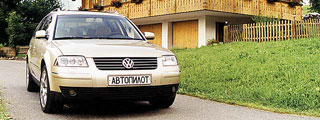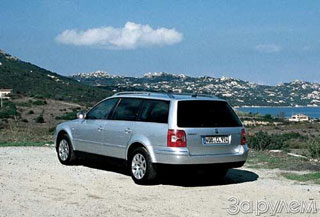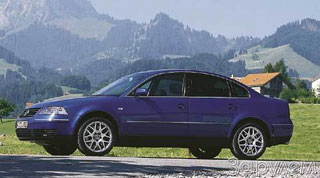Test drive Volkswagen Passat B5 2000 - 2005 sedan
Beer or wine?
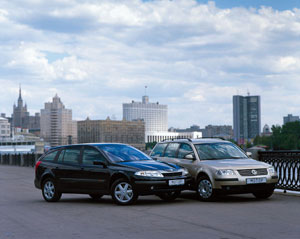 Cars with a wagon body are easily explained among people's household people, as well as simply family ones. Recently, the situation has become aggravated in connection with some unhealthy excitement around outdoor activities. Meanwhile, the name itself - the station wagon - suggests that such a machine, being a relatively accessible tool against space deficiency on the long run, can be used as the only one in the family.
Cars with a wagon body are easily explained among people's household people, as well as simply family ones. Recently, the situation has become aggravated in connection with some unhealthy excitement around outdoor activities. Meanwhile, the name itself - the station wagon - suggests that such a machine, being a relatively accessible tool against space deficiency on the long run, can be used as the only one in the family. 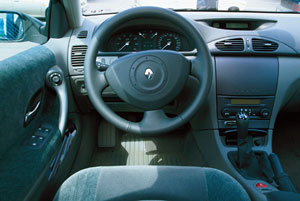 Europe has long appreciated the advantages of the station wagon: in the production range of each decent company there are at least two such modifications of different price categories, and there are more and more similar models. Taking this opportunity, we took the new generation of Renault Laguna Estate for the test - and in a couple of a leader in his class, holding the palm of the championship for three generations, the VW Passat Variant.
Europe has long appreciated the advantages of the station wagon: in the production range of each decent company there are at least two such modifications of different price categories, and there are more and more similar models. Taking this opportunity, we took the new generation of Renault Laguna Estate for the test - and in a couple of a leader in his class, holding the palm of the championship for three generations, the VW Passat Variant. A lot has been written about the noble German, so we will be brief. A strict appearance, no excesses, everything is extremely functional - and soundly. At the same time, the car does not look cheap at all, rather, even the opposite - more expensive than it really is. In addition, as a result of recent restyling, the car had wonderful headlights that greatly changed its appearance. Thus, preserving the honorary title of utilitarian vehicles suitable for caring or for family sorties to the country, VW is quite suitable for the role of the main, everyday car - you can go to work and parch without embarrassment of the office. Real station wagon.
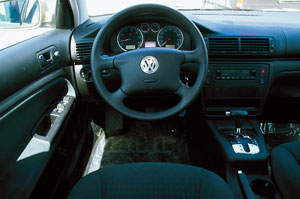 The French went the other way. First of all, we are talking about a very outstanding appearance. The Laguna II model continues the traditions of the good old R21 NEVADA (what can you do, pulls the French towards the Wild West). The front part is the rethought heritage of the 80s: fewer angles, more clean lines plus new technologies - the front wings of the car are plastic (the shape -forming element of the body has become the detail of the one -time installation). Given the total drop in the driver’s skill in Russia, an important feature.
The French went the other way. First of all, we are talking about a very outstanding appearance. The Laguna II model continues the traditions of the good old R21 NEVADA (what can you do, pulls the French towards the Wild West). The front part is the rethought heritage of the 80s: fewer angles, more clean lines plus new technologies - the front wings of the car are plastic (the shape -forming element of the body has become the detail of the one -time installation). Given the total drop in the driver’s skill in Russia, an important feature. 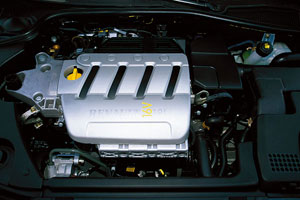 In the smooth lines of the lobes of the windshield, hood and roof there is something unobtrusively futuristic. The sidewall is also good - the rear windows are devoid of traditional angular universals, which adds the appearance of a dynamism car. Both cars have features of basic models (VW sedan and hatchback Renault) - continuity is immediately visible, while universal harmony is not violated. Like all modern station wagons of this class, cars are equipped with roof rails for painless trunk installation, and also have regular places for towing.
In the smooth lines of the lobes of the windshield, hood and roof there is something unobtrusively futuristic. The sidewall is also good - the rear windows are devoid of traditional angular universals, which adds the appearance of a dynamism car. Both cars have features of basic models (VW sedan and hatchback Renault) - continuity is immediately visible, while universal harmony is not violated. Like all modern station wagons of this class, cars are equipped with roof rails for painless trunk installation, and also have regular places for towing. 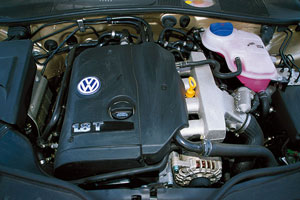 Renault rear glass tilt is much larger than VW, which hints at the lower capabilities of the luggage compartment (to a certain extent, this is compensated by the longitudinal adjustments of the seats). But such a feature affects aerodynamics well - reduces turbulence at the stern. In addition, in the German machine to fold the backs of the rear seats, it is necessary to pre -remove the headrests, and in the French they only need to be drowned in the back. Access to the back fixers is equally convenient in both cars, and significant physical efforts are not required to transform the cabin. A distinctive feature of Renault is the rapidly removable upholstery of lightning seats: stinging, it can be washed in an ordinary washing machine. So the upholstery is more reminiscent of factory covers.
Renault rear glass tilt is much larger than VW, which hints at the lower capabilities of the luggage compartment (to a certain extent, this is compensated by the longitudinal adjustments of the seats). But such a feature affects aerodynamics well - reduces turbulence at the stern. In addition, in the German machine to fold the backs of the rear seats, it is necessary to pre -remove the headrests, and in the French they only need to be drowned in the back. Access to the back fixers is equally convenient in both cars, and significant physical efforts are not required to transform the cabin. A distinctive feature of Renault is the rapidly removable upholstery of lightning seats: stinging, it can be washed in an ordinary washing machine. So the upholstery is more reminiscent of factory covers. There are no complaints about comfort and adjustments to the driver's seat in both cases. The steering wheel in Renault and VW is adjustable along the angle of inclination and height. Everything has long been known about VW devices - they are made in blue tones, and those who like them, about the same as those who cannot stand them. Renault devices will like, probably, to anyone - and illumination, and visibility, and especially the shape of the arrows. As well as digitization and fonts.
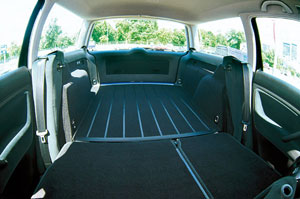 Renault branded lotion is a key card the size of a credit card. By inserting it into the slot and by pressing the start (Enter), you can observe how fuel liters melt in the process and the mileage decreases to the nearest that. VW did not reach such a life. In general, Renault is more friendly to the riders - it has a more cozy salon, the seats are softer, and the suspension is more comfortable.
Renault branded lotion is a key card the size of a credit card. By inserting it into the slot and by pressing the start (Enter), you can observe how fuel liters melt in the process and the mileage decreases to the nearest that. VW did not reach such a life. In general, Renault is more friendly to the riders - it has a more cozy salon, the seats are softer, and the suspension is more comfortable. 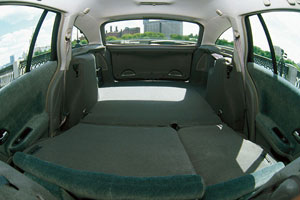 The VWs also have a rather rigid suspension, and in combination with good informativeness on the steering wheel, even a driver with sports ambitions will satisfy the steering wheel. If the car rides empty, then at low speeds it noticeably shakes, but with a load and at high speed everything returns to normal. The ratio of comfort and feelings of the machine is almost perfect. In corners, VW behavior is close to neutral, the demolition of the front axis begins only under the thrust and is very well controlled.
The VWs also have a rather rigid suspension, and in combination with good informativeness on the steering wheel, even a driver with sports ambitions will satisfy the steering wheel. If the car rides empty, then at low speeds it noticeably shakes, but with a load and at high speed everything returns to normal. The ratio of comfort and feelings of the machine is almost perfect. In corners, VW behavior is close to neutral, the demolition of the front axis begins only under the thrust and is very well controlled. The brakes were pleased with their effectiveness, but a delicate pedal requires addiction, even a light press is caused by a strong cowl.
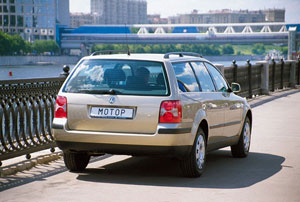 It is more pleasant to go to Renault without a load, all the irregularities are almost unnoticed, without sound accompaniment. But you have to pay for this - in corners the car is tapping much more than a VW, some lack of reactive effort on the steering wheel (especially in the near -Zone), of course, does not improve the situation. In addition, insufficient rotation is noticeably expressed.
It is more pleasant to go to Renault without a load, all the irregularities are almost unnoticed, without sound accompaniment. But you have to pay for this - in corners the car is tapping much more than a VW, some lack of reactive effort on the steering wheel (especially in the near -Zone), of course, does not improve the situation. In addition, insufficient rotation is noticeably expressed. 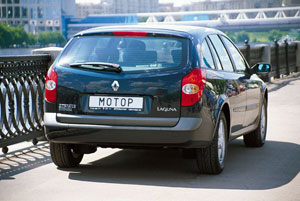 The brakes are almost perfect. Pedal - with the optimal combination of stroke and effort, and ABS intervenes only when the rubber completely exhausted its capabilities to clutch the road surface ...
The brakes are almost perfect. Pedal - with the optimal combination of stroke and effort, and ABS intervenes only when the rubber completely exhausted its capabilities to clutch the road surface ... Both cars are universals of the highest sample. They can really be used very widely - both as commercial trucks, and as traveling cars for every day. Both of them will delight the owner with the efficiency and capabilities of arranging sleeping places. Which of them is better, it is difficult to say, both have some disadvantages - but they are more than overlapped. So the choice is a matter of taste: Passat, for example, is more strict - both externally and on the go, so many can prefer imposing Laguna, and vice versa. Someone loves sausages and beer, and someone-cheese and wine.
Text: Alexander Nadens, Yegor Karpunin
Source: Motor magazine [No. 8/2002]
Video Test Drive Volkswagen Passat B5 2000 - 2005
VOLKSWAGEN Passat B5 2000 - 2005 - 2005
Volkswagen Passat B5 2000 test drives - 2005
Krash Test Volkswagen Passat B5 2000 - 2005
Krassh Test: Detailed Information28%
Driver and passengers
13%
Pedestrians
Malfunctions Volkswagen Passat B5 2000 - 2005
Volkswagen Passat malfunctions: Detailed information| Passat B5 2000 - 2005 | |
|---|---|
| Engine |  |
| Transmission |  |
| Control system and suspension |  |
| Brake system |  |
| Air heating and air conditioning |  |
| Launch and charging system |  |
| Electric components and so on |  |
| Corrosion body stability |  |








